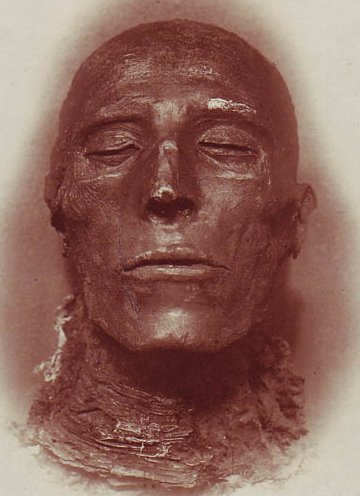
“The Golden Flask” was the eighth installment of Sax Rohmer’s serial, Fu-Manchu. First published in THE STORY-TELLER in May 1913, it later comprised Chapters 21-23 of the novel, The Mystery of Dr. Fu-Manchu (re-titled The Insidious Dr. Fu-Manchu for U. S. publication). Rohmer added brief linking material to the start of the story for its book publication in an effort to tie the story closer together with its immediate predecessor. “The Golden Flask” is unique in not being centered upon Dr. Petrie’s infatuation with Karamaneh, but rather upon our heroes’ obsession with bringing Dr. Fu-Manchu to justice.
The story harkens back to “The Zayat Kiss” in being set in motion with Nayland Smith and Dr. Petrie correctly identifying Henry Stradwick, Lord Southery as the next target of assassination, but being too late to prevent his death. Lord Southery’s physician, Sir Frank Narcombe believes the peer to have expired from heart failure. Oddly, Smith states that neither he nor Petrie represents the official police. A reason for this blatant deception is never given and must be concluded as an error on Rohmer’s part. Reference is made to both Smith and Petrie possessing a supernatural ability to detect Fu-Manchu’s presence at the scene of Lord Southery’s death despite the absence of any clues pointing to foul play. When Petrie describes Smith as looking like “a man consumed by a burning fever,” the reader is completely willing to suspend disbelief and go along with Rohmer’s frenzied paranoia. It is the same mania that captivated Petrie (and, by extension, the reader) at the start of “The Zayat Kiss.”
Feeling powerless, Petrie retreats to a used bookstore to research Chinese secret societies (one can’t help but suspect this is art imitating life for Rohmer) where he bumps into Karamaneh. This is actually a brilliant touch in spite of the improbability of their meeting for, until now, Petrie has been oddly silent about the object of his affections. Perhaps recognizing that he had delayed character development for too many episodes, Rohmer has Karamaneh lead Petrie to Dr. Fu-Manchu’s current base of operations in the East End. Here, we meet her delicate and tragic younger brother, Aziz who is kept in a cataleptic trance from which only Fu-Manchu can release him using a special serum.
Rohmer has Petrie express surprising distrust of Karamaneh as he feels powerless (once again) for allowing himself to be led by a woman “whose beauty, whose charm , truly might mask the cunning of a serpent.” This uncharacteristic reticence is perhaps best explained when Petrie is faced with boyish Aziz who is his sister’s near twin with his delicate effeminate features. The difference being that Aziz is portrayed as the uncorrupted victim and not the duplicitous partner in crime like his sister. Rohmer makes a startling role reversal for the genre by having the young boy take the place of the damsel in distress with Karamaneh portrayed more as a femme fatale for the purpose of the mood that the author wishes to convey for the story. It is a curious move, but not without precedent in 1913 (witness the bizarre gender identity issues in Pierre Souvestre and Marcel Allain’s contemporaneous Fantomas).
Petrie departs Fu-Manchu’s East End headquarters with a vial of the mysterious elixir courtesy of the much-maligned Karamaneh. He tells Smith all he has seen and a police raid is planned until Smith, acting on an unexplained impulse, resolves to return to Lord Southery’s home. Smith’s motivation becomes apparent shortly as he demands Henderson, Lord Southery’s solicitor show him to the crypt where the peer’s body rests. Smith has wisely deduced that since Dr. Fu-Manchu has a catalepsy-inducing drug at his disposal, he has used it to fake Lord Southery’s death and intends to reclaim him and press him into his service (as Smith speculates has already been the fate of Stradwick’s allegedly deceased German counterpart, Von Homber). Petrie, possessing the mysterious elixir to the drug, is able to revive Lord Southery just seconds before Dr. Fu-Manchu and his servants arrive at the crypt. Fu-Manchu escapes Smith and the story ends with the promise of an exciting raid upon Fu-Manchu’s East End hideout for the following month’s installment. Rohmer has regained his pace with this story and is bringing the plot threads together with great panache. The reader is left eager to learn What Will Happen Next.




.jpg)